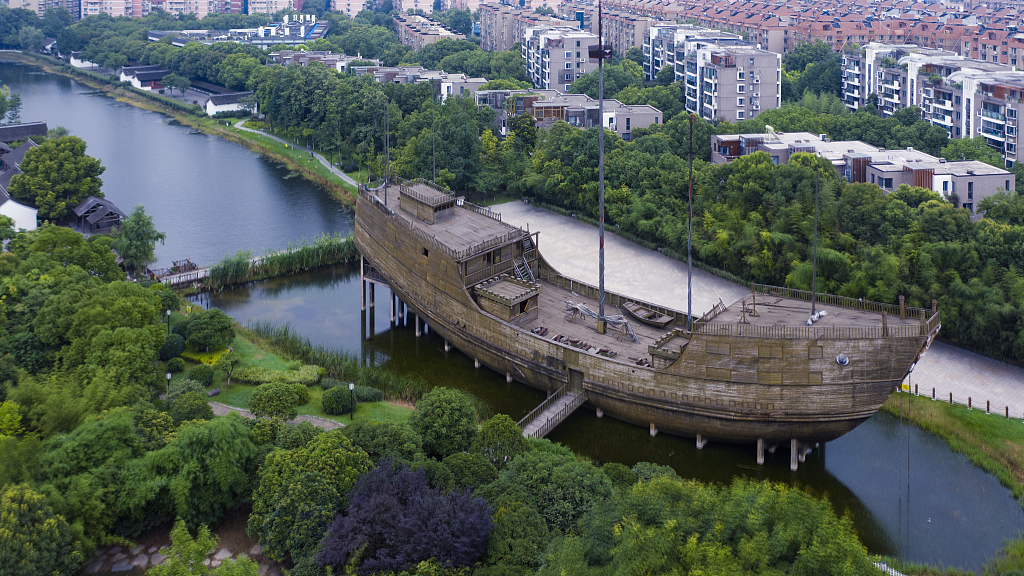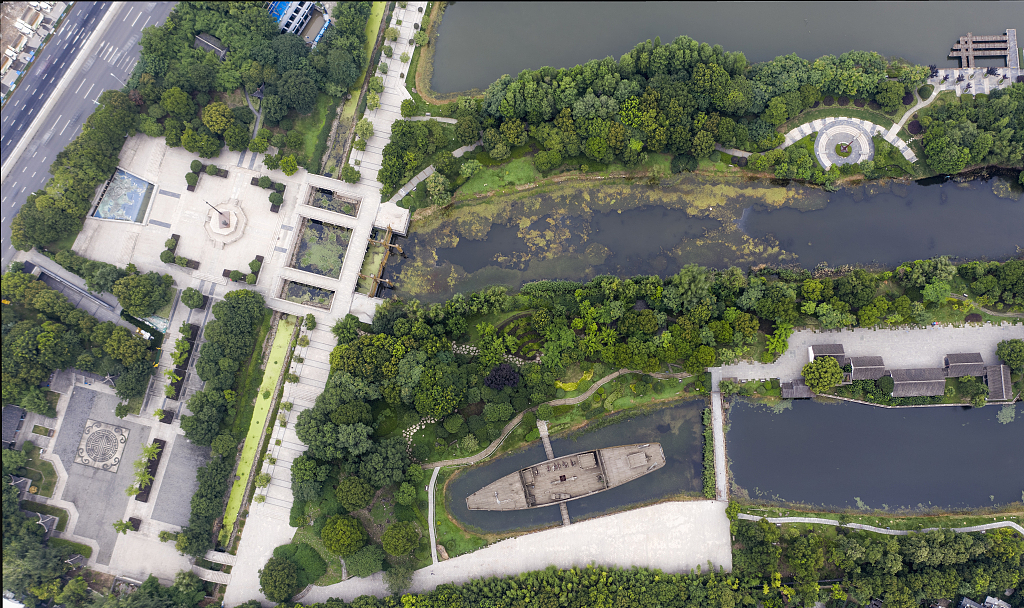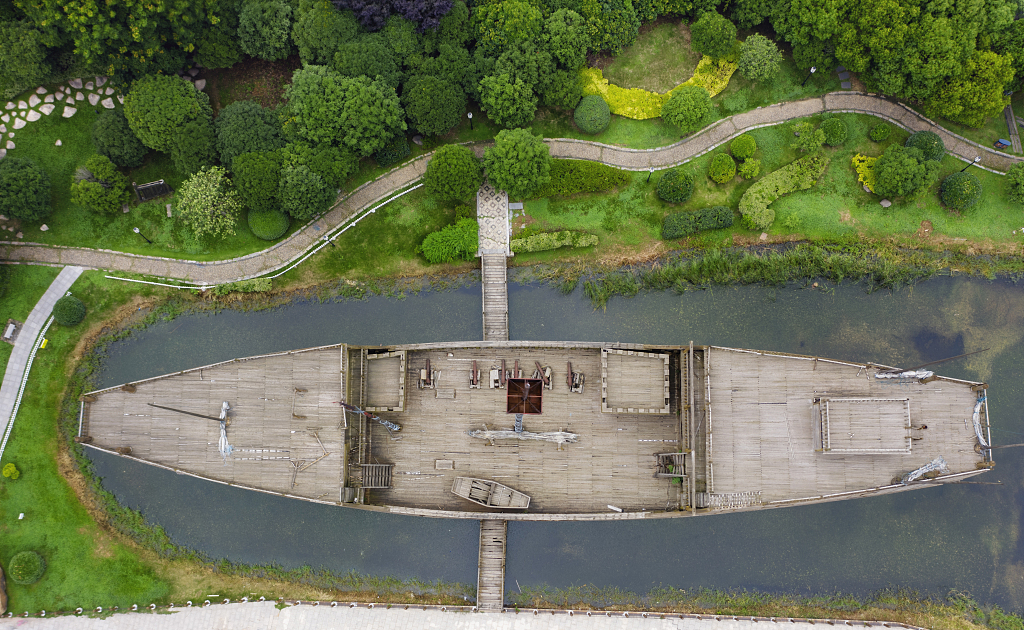
Photo taken on July 9, 2022 shows a view of Nanjing Zheng He Treasure Ship Ruins Park in Nanjing, east China's Jiangsu Province. /CFP
Photo taken on July 9, 2022 shows a view of Nanjing Zheng He Treasure Ship Ruins Park in Nanjing, east China's Jiangsu Province. /CFP
Zheng He, a pioneer of global navigation, played a pivotal role in establishing China's renowned "Maritime Silk Road." Over an extraordinary span of 28 years, he embarked on seven momentous voyages that greatly contributed to the development and expansion of maritime trade routes connecting China with various countries and regions.
Nanjing, as the birthplace of Zheng He's voyages, hosts numerous historical remnants closely tied to his legacy. The Longjiang Shipyard Site, situated on the western side of the Qinhuai River estuary in Nanjing, served as the construction hub for many of the ships used in Zheng He's expeditions. Historical records indicate that in the fifth year of the Yongle reign (1407), the shipyard refurbished 249 ships of diverse types to meet the requirements of diplomatic missions to Western countries.

Photo taken on July 9, 2022 shows a view of Nanjing Zheng He Treasure Ship Ruins Park in Nanjing, east China's Jiangsu Province. /CFP
Photo taken on July 9, 2022 shows a view of Nanjing Zheng He Treasure Ship Ruins Park in Nanjing, east China's Jiangsu Province. /CFP
Nanjing Zheng He Treasure Ship Ruins Park, developed on the grounds of the Longjiang Shipyard Site, stands as a grand heritage spot created by the city of Nanjing in 2005 to commemorate the 600th anniversary of Zheng He's inaugural voyage.
The park showcases a range of artifacts, including exquisitely-crafted windows made from ancient shellfish shells. Archaeological excavations at the shipyard revealed eight shellfish shells, meticulously cut into rectangular shapes and polished to a remarkable thickness of 0.1 millimeters, radiating with a sparkling translucency. Skilled craftsmen at the shipyard skillfully incorporated these finely polished shell pieces into the lattice windows of the ships, simultaneously protecting against wind and rain while ensuring ample illumination within the cabins.

Photo taken on July 9, 2022 shows a view of Nanjing Zheng He Treasure Ship Ruins Park in Nanjing, east China's Jiangsu Province. /CFP
Photo taken on July 9, 2022 shows a view of Nanjing Zheng He Treasure Ship Ruins Park in Nanjing, east China's Jiangsu Province. /CFP
Visitors to the park can also immerse themselves in the remarkable craftsmanship of shipbuilding from that era. Notably, the construction of watertight compartments exemplifies this expertise, wherein craftsmen employed chisels and hammers to insert twisted fibers made from hemp, tung oil, lime, and other materials into the gaps between planks, forming a watertight seal.
Whether it be the shipyard site, Zheng He's tomb, other historical relics, or the shipbuilding artifacts unearthed at the treasure ship site, these invaluable remnants undoubtedly bear witness to that glorious era, vividly depicting the extraordinary age of Zheng He.
Since 2005, July 11 has been officially recognized as China's Maritime Day, as approved by China's State Council, in commemoration of Zheng He's inaugural voyage on July 11, 1405.